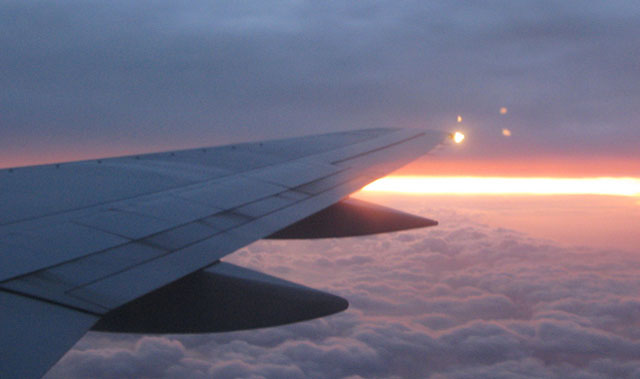
Many countries are playing catch up by allowing plane passengers to keep their mobile phones switched on — albeit in flight mode only — during take off and landing.
But many have probably already done this. A study in the US found almost a third of passengers admitted they “accidentally” left their portable electronic device switched on during a flight, and the majority of those devices were smartphones.
So, do we really know what we’re doing with this mobile technology anyway? And just how much connection to a phone network or the Internet do passengers demand?
The answer in part could be generational and depends on how comfortable and competent you are with the technology in your hands.
From the beginning of the 21st century, argument has been waged in academic circles about the digital capabilities of different individuals.
Back in 2001, innovator and technology expert Marc Prensky divided society into digital natives (those born after around 1985) and digital immigrants (those born before).
Since then, the academic community has continued to argue about the competent use of technology by individuals, with Oxford University’s David White coining the terms digital visitor and digital resident.
Prensky himself refined his work from a generational aspect to one of digital wisdom, and academics ad infinitum argue in particular about the placement of different individuals along the generational spectrum.
In 2006, the European Union recognised digital competence as one of the eight key competencies for lifelong learning.
Yet studies such as the 2014 Digital IQ Index show a disturbing lack of digital competence among professionals. Perhaps airlines feel they are right to limit our technology use in certain situations?
Despite this lack of competence, it’s clear that a desire to remain connected exists. The current generation has no knowledge of a world that is not connected, so it’s no surprise that a 2013 Internet Trends report suggested that “the average mobile consumer checks their device 150 times a day”.
In a world such as this, with ubiquitous computing devices that provide the knowledge of the world in our pocket, is it any wonder that individuals want to continue to use their devices in the air, not being forced to “disconnect”, even for the short period of take off and landing?
So, given this desire to remain connected, why don’t airlines provide better connectivity options? Depending on the country you live in, the connectivity you can get on a plane actually varies considerably.
The Economist reported in 2013 that around half of the full service domestic flights in the US have Wi-Fi access through the airline. International flights are slowly incorporating satellite Wi-Fi for long-haul journeys, although “pricing may vary”.
If you can connect to the Internet, then in theory you can connect with the world through e-mails, Web browsing, instant messaging and even audio and video communication through Skype and other applications, bypassing the need or any phone network connection.
But the quality of Wi-Fi on flights remains a common complaint for passengers, with high costs and slow speeds providing a sub-optimal experience.
In Australia , the addition of Wi-Fi to flights has been ponderously slow, with Qantas ditching its Wi-Fi trial in 2012. Virgin Australia offers in-flight entertainment system over an in-plane “intranet”, but no external Wi-Fi access to the Internet.
This is despite a Sydney Morning Herald poll earlier this year identifying that 78% of passengers would trade in-flight service or bigger seats for a free Wi-Fi service.
So, then, what’s the hold up? Perhaps the issue is one of control. A common theme among the offered Wi-Fi services overseas is that they are always offered by the airline, and usually at a substantial cost.
Interestingly, for domestic flights over land, what is offered is a Wi-Fi service that then connects to existing mobile phone service towers on the ground.
It should be possible to make a direct connection between cellphone towers and a mobile phone in the air, at least for domestic flights.
In fact, the technology has existed since at least 2004, according to CNN, but hasn’t yet appeared in planes. This is in direct contrast to other areas that are improving cell service on public transport or the ramping up of free Wi-Fi such as public malls, shopping centres and coffee shops.
Perhaps the airlines don’t trust our competency with the service. As reported previously, about one in three people don’t turn off their portable electronic devices on flights anyway.
The research suggests that our competency with technology is low, even if our desire is high. Maybe the airlines are afraid of what we will do if we are given access to our devices. Perhaps they think it will be like what happens when you do a conference call in real life.
Skit on using electronic devices on aircraft (contains very strong language):
Nevertheless, whether it’s about control or about competency, it’s clear that we are entering a connected world where many individuals expect to always be online.
In this world, the airlines have no choice to provide a service, at a reasonable price and with a reasonable speed, that satisfies our need to be connected — especially as their planes become full of digital natives.![]()
- Michael Cowling is senior lecturer and discipline leader, mobile computing and applications, Central Queensland University
- This article was originally published on The Conversation




